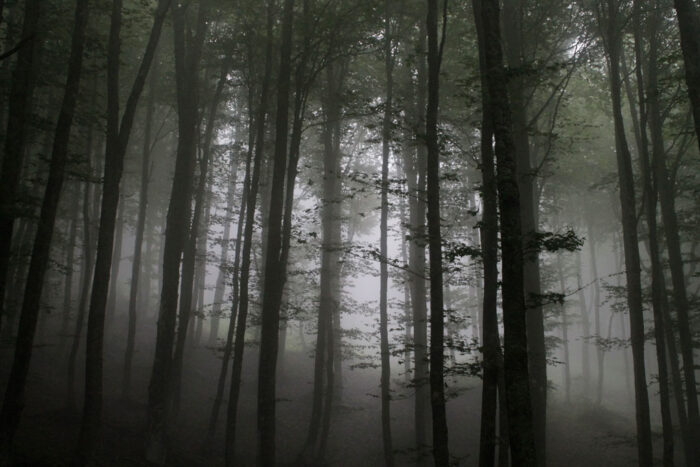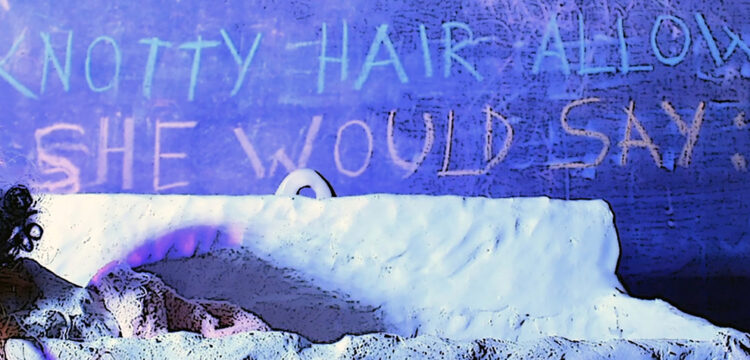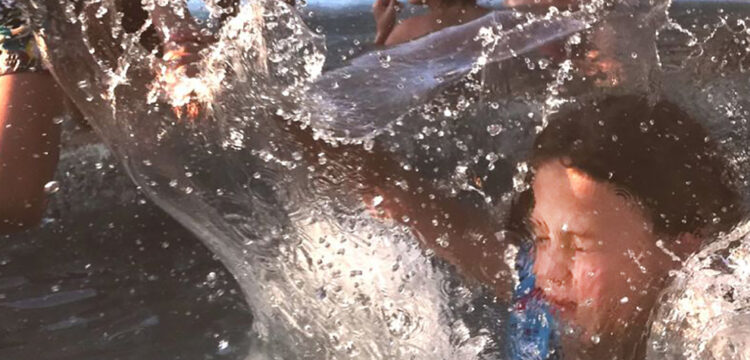Syllabus
The art of living. Plays.
Ruth is a collector of writings, a site dedicated to grey literature, unpublished and experimental texts, conceived by Manuela Pacella, born from the pleasure of writing and reading. We are very glad to host a text each month, selected from one of the sections of the four-headed Ruth: Yellow Dog, Hungry Ghosts, Free Spirits, Brain New.
This month, we picked from Free Spirits, a text written in November 2020: Syllabus, the curriculum of an imaginary course, a dream syllabus approaching life through plays.
The art of living. Plays to find passion, despair, life, death, love. You will find below a list of plays chosen subjectively for what they have given me. It is not intended to create an historical overview of plays from the 16th century to the present, but this list rather is intended to collect some plays that have contributed and have been significant in my life until now.
Feel free to read these works out loud and if possible in a group, with as many people as the play requests. They are texts for better living. Whether we were born 100 years ago or 100 years from now, some issues still remain, certain existential and non-existential questions will always be part of us.
The plays chosen all speak of passion, anguish and anxiety, despair and love, they speak of life and how difficult, beautiful, terrible, meaningful or meaningless it can be. These are plays that can be a key to one’s own survival, give tools to continue moving forward, or to share reflections, to feel less alone, to understand that life will never be as we had thought it.
They are almost more real or true than life itself and for this reason as a reader you can feel taken seriously. As if these writers had faith in their readers and in the lives of these readers, as if they were entrusting us to be understood through their texts.
The order of the texts come in the sequence in which I encountered them.

Tennessee Williams
This property is condemned, 1946
I encountered this play at 12, an age when I didn’t know who I was—(do I know who I am now? Not quite but I know myself better than then. Is it, by the way, ever possible to know fully who we are?). It was a time when life seemed far away from me, when I wanted to be an adult and at the same time I wanted to be a child. I was a big sister but maybe I would have preferred to be a little sister. In This property is condemned we meet a girl, Willie, walking on the railway track. She discovers a boy, Tom, and she loses her balance. From this meeting begins a dialogue where she leads and he follows. Willie talks about her life, her family, her older sister (she wishes to be like her, Willie’s life circles around her sister who died of TB). Tom begins to feel sorry for Willie, the girl who lives in a station building, alone, a girl who already wants to be an adult, a woman, but she is not yet.

William Shakespeare
Romeo e Juliet, 1594-1596
Is it possible to remain indifferent to the love that grows and lives between Romeo and Juliet? A story of two families, a story of hatred and revenge, of death and life, but above all of passion and love, a love that becomes greater than life itself, so much so that without it you can no longer live.
Federico García Lorca
La casa de Bernarda Alba (The House of Bernarda Alba), 1936
What happens in a family when the father dies and the mother decides to lock herself up in her house in mourning with her daughters for 8 years? Daughters aged between 20 and 39. What happens between sisters when they fall in love with the same man? A play wherein jealousy permeates the walls, ceilings, bodies. Isolated, locked up, you become even more desperate than you already were. Something to keep in mind for the next pandemic. Is isolation really the right path or can it lead to consequences that we will not be able to manage? I met this play when I was 14 and the character I hold dearest is Martirio, the hunchbacked and ugly sister just older than Adela, the youngest sister, the beauty of the family.
Joyce Carol Oates
I stand before you naked, 1991
The first time I read this play I was sitting on the floor in a black box. The year was 2007. I stand before you naked is a collection of monologues told by women. We enter the lives of these women of various ages and backgrounds, who all have something to tell us. Reminding us that we all have something to tell. All lives have value, and all lives are worth telling and listening to. We begin to exist in dialogue, in confrontation, in the encounter with the other.

Mare Kandre
Vilse (Lost), 1986
We have all sometimes felt the need to escape, to try to get lost and then find ourselves again. Mare Kandre reveals an episode in the life of two girls, A and B, who run away, into a forest, to lose themselves. We follow the dynamics of this pair of friends who unbalance and balance each other trying to find meaning and trying to feel that life is part of them.
A: I just can’t do it anymore… I’m so tired! I don’t get it. I’ve been there for an eternity and it never ends. What’s going on? Look at us! How do we look! None of our clothes fit! Everything is heavier! Everything is difficult! I look at myself in the mirror… I look at myself in the mirror and do not know who that person is. Have never seen her before. It’s creepy, disgusting, horrible and appalling! It’s like life suddenly exists somewhere outside of me. In others. But never in me. It has no place in me anymore. No place at all. Sometimes I’m so tired I just want to die. Sometimes I see nothing but a big, black wall that keeps me from all life on earth. Oh! It’s like walking over a giant sheet of ice. You have to go so slowly, slowly, otherwise it will crack. You are so heavy and changed. Not a little girl anymore. And far, far away you see beaches, lands and islands and even though you are so far away from everything, you can still, no matter how so clearly, smell the fires burning there. Because people are there and it’s warm there. They seem to be having a good time and you want nothing more than to get there. You want to go there with all your heart. And not walk around out here in the cold alone anymore. You want your very own fire to stand by. But it takes so long. And even though you know that sooner or later you will arrive, you just want to lie down and sleep and die. Because it’s so slow. It’s so inconsolable. And you can’t run either because then maybe the ice will break. So the only thing you can do is keep going, slowly, slowly, so deadly tired, without thinking, completely empty and cold inside. When I was little, life was within one. Everything was connected then. You saw more. Do you remember?

Christina Ouzounidis
Ordet – kött (The Word – Flesh), 2007
“I am no one.” Thus begins this monologue. A monologue of self-denial, full of contradictions. This person is no one, no one that makes a difference, no one special, no one particular, the world turns without her, just as fast, just as slowly. But in all these denials of one’s self, a character nonetheless emerges, perhaps even more strongly.
Sarah Kane,
Crave, 1998
The most fascinating, beautiful and darkest text I have ever read. The text that has had the most impact on my life so far. I found it in the autumn of 2009 and still today lines come back to me. A, B, C and M, four characters or maybe four parts of the same character. Personally, I see them as four different individuals who each tell a monologue which is nevertheless fragmented and intertwined with those of the others, four individuals who have different driving forces but have something in common: they all try to survive, to live. This is a text that never stops moving, growing. A text that changes depending on how old the reader is and in what period of life she is. When I read it for the first time, I seemed to understand everything but also nothing. It is a text that continues to ferment within me. A more vital and more real text, truer than life itself.
Anton Chekhov
Ча́йка (The Seagull), 1895
It was 2010, autumn. I remember walking in the woods of Kungälv, north of Gothenburg. I had moved there to study at theatre school right after upper secondary school. In the woods I found beeches with eyes on their trunks, on the ground a blanket of their bronze coloured leaves. In another part of the wood stood the pines, low growing, twisted by the wind. And wherever they stood I could scent the cakes, biscuits and sweets produced in the “Göteborgskex” factory down in the village. As I walked I would repeat Nina’s words, either inside or out loud.
NINA: Why do you say that you have kissed the ground I walked on? You should kill me rather. [She bends over the table] I am so tired. If I could only rest–rest. [She raises her head] I am a sea-gull–no–no, I am an actress. [She hears ARKADINA and TRIGORIN laughing in the distance, runs to the door on the left and looks through the keyhole] He is there too. [She goes back to TREPLIEFF] Ah, well–no matter. He does not believe in the theatre; he used to laugh at my dreams, so that little by little I became down-hearted and ceased to believe in it too. Then came all the cares of love, the continual anxiety about my little one, so that I soon grew trivial and spiritless, and played my parts without meaning. 1 never knew what to do with my hands, and I could not walk properly or control my voice. You cannot imagine the state of mind of one who knows as he goes through a play how terribly badly he is acting. I am a sea-gull–no–no, that is not what I meant to say. Do you remember how you shot a seagull once? A man chanced to pass that way and destroyed it out of idleness. That is an idea for a short story, but it is not what I meant to say. [She passes her hand across her forehead] What was I saying? Oh, yes, the stage. I have changed now. Now I am a real actress. I act with joy, with exaltation, I am intoxicated by it, and feel that I am superb. I have been walking and walking, and thinking and thinking, ever since I have been here, and I feel the strength of my spirit growing in me every day. I know now, I understand at last, Constantine, that for us, whether we write or act, it is not the honour and glory of which I have dreamt that is important, it is the strength to endure. One must know how to bear one’s cross, and one must have faith. I believe, and so do not suffer so much, and when I think of my calling I do not fear life.





